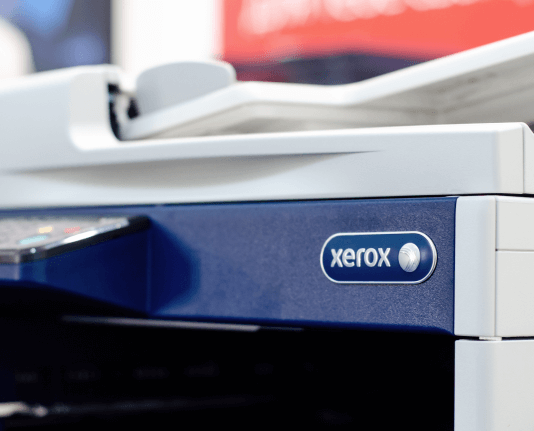Create Initial Arrangement with airSlate SignNow
Do more online with a globally-trusted eSignature platform
Remarkable signing experience
Trusted reporting and analytics
Mobile eSigning in person and remotely
Industry rules and conformity
Create initial arrangement, quicker than ever before
Useful eSignature extensions
See airSlate SignNow eSignatures in action
airSlate SignNow solutions for better efficiency
Our user reviews speak for themselves






Why choose airSlate SignNow
-
Free 7-day trial. Choose the plan you need and try it risk-free.
-
Honest pricing for full-featured plans. airSlate SignNow offers subscription plans with no overages or hidden fees at renewal.
-
Enterprise-grade security. airSlate SignNow helps you comply with global security standards.

Your step-by-step guide — create initial arrangement
Using airSlate SignNow’s eSignature any business can speed up signature workflows and eSign in real-time, delivering a better experience to customers and employees. create initial arrangement in a few simple steps. Our mobile-first apps make working on the go possible, even while offline! Sign documents from anywhere in the world and close deals faster.
Follow the step-by-step guide to create initial arrangement:
- Log in to your airSlate SignNow account.
- Locate your document in your folders or upload a new one.
- Open the document and make edits using the Tools menu.
- Drag & drop fillable fields, add text and sign it.
- Add multiple signers using their emails and set the signing order.
- Specify which recipients will get an executed copy.
- Use Advanced Options to limit access to the record and set an expiration date.
- Click Save and Close when completed.
In addition, there are more advanced features available to create initial arrangement. Add users to your shared workspace, view teams, and track collaboration. Millions of users across the US and Europe agree that a system that brings people together in one holistic digital location, is the thing that companies need to keep workflows functioning smoothly. The airSlate SignNow REST API enables you to embed eSignatures into your application, internet site, CRM or cloud storage. Try out airSlate SignNow and enjoy faster, easier and overall more effective eSignature workflows!
How it works
airSlate SignNow features that users love
Get legally-binding signatures now!
What active users are saying — create initial arrangement
Create initial arrangement
[QUARTET SINGS "BABY'S FIRST CHORALE"] [CHOIR SINGS "CHOIR WITH KNUT"] Choirs are extremely versatile groups that can create a variety of textures and effects. However, one of the most important aspects of choral arranging is knowing how to create big and resonant chords, and knowing how to achieve this for any type of chord throughout the registers of the singers. The key to doing this is the same for all instruments, and is done by applying a physical property that all sound possesses. In fact, it uses the very basis of harmony, which is the harmonic series. The harmonic series, also called the overtone series, is a combination of frequencies that all sounds are made up of. There are plenty of videos about this physical phenomenon of sound on YouTube, for instance "Intro To The Harmonic Series" by Two Minute Music Theory. For our purposes, what you need to know is that any sound, like a singer singing a note, or even just some metal banging against the kerb, will consist of various different sound waves oscillating at different frequencies, which our brain interprets as a single sound. The important difference between these two examples is that the singer will probably produce a sound that is "resonant", that is, strongly amplified at specific frequencies. Conversely, the resonance of the banging will probably be less pronounced, though you can certainly hear resonance in a lot of everyday sounds, like this drilling that was going on outside my window yesterday. The "main frequency" in a resonant sound is called the "first partial", or the "fundamental", and the overtones are called the "second partial", "third partial", "fourth partial", and so on. Notice how these first five notes create an A major chord if played together. We'll get back to why this is important later. [SINGS A2] The harmonic series for any note goes as follows: the fundamental, in this case A an octave and a bit below middle C, or A2, The second partial, which is an octave above, the third partial, which is a fifth above the second, the fourth partial, which is a fourth above the third, the fifth, a major third up, a sixth, a minor third up and so on, getting closer and closer in pitch as you get higher. [GASPING FOR AIR] Note that some of these partials don't fit with the equal tuning system we use in the West, but this is because equal temperament was developed as a compromise, to allow for smooth key changes, with every key being slightly out of tune. You can learn more about this in this video by Nathan Nokes, if you're interested. Singers train themselves to control the prominence of the overtones in their voice. In fact, certain styles of singing, like throat singing, are entirely based on this manipulation of the sound. By shaping the resonating chamber that the mouth creates, you can bring out specific overtones, like so: [SINGS] Okay, so this is all well and good, but how does it apply to choral chords? Well, if you structure a chord according to the harmonic series, each part will strengthen the overtones of the lower notes, producing a very resonant overall sound. Of course, you're not always going to use major chords in root position, that is, with the root note in the lowest part. However, you can apply the following guidelines to make sure that the chords in your arrangement are strong, resonant, and balanced. Put the bigger intervals at the bottom of the chord, and put them closer as you get higher. This will strengthen the overtones of the lower notes, and create a rich sound. Here's how it might sound for a major chord: [CHOIR DEMONSTRATES] Compare this with a voicing that does the opposite, with closer intervals at the bottom, and bigger ones at the top: [CHOIR DEMONSTRATES] While the second one doesn't sound "wrong", it doesn't have the same strong resonance of the first one. Avoid crossing parts when voicing out the chords. What this means is, don't, for example, have the tenors singing above the altos, except if you want the tenors to be very prominent. The reason why you should avoid this is that voices tend to get richer in overtones as they get higher in their range, effectively producing a more intense and prominent sound. Here's how a cadence might sound if you've not crossed parts: [CHOIR DEMONSTRATES] Now, compare this with a cadence where the tenor part is above the alto part: [CHOIR DEMONSTRATES] You can use the fact that voices tend to get louder and more rich in overtones as they get higher to your advantage when arranging. If you want a very loud and intense chord, just put it high in the ranges of the singers, and it should happen pretty much automatically. Conversely, if you want a quieter and less intrusive chord, just put it lower in their ranges. Note that singers are certainly capable of singing in a high range and staying quiet, but it can be really hard work. So, as a general rule, to give the singers and the musical director an easier time, just don't have them singing high and quiet. Don't double the third in a major chord. You may have heard about this before, but not had it explained properly. Here's why: In a major chord, the major third is closely related to the root, being the fifth partial, but it has very different overtones from the root when performed on its own. The fifth relative to the root, or the third partial, is so closely related to the root that these overtone differences aren't too noticeable, but, once you get to the fifth partial, or major third of the chord, these differences become more apparent. Thus, if you double this note, it will stick out more, and can overpower the overtones of the root and fifth, creating a less balanced sound. Here's a chord with a doubled third: [CHOIR DEMONSTRATES] Compare this with one where the third isn't doubled: [CHOIR DEMONSTRATES] The first example doesn't exactly sound "wrong", but the third is very prominent in the chord, whereas in the second example it doesn't stick out much. Don't get me wrong; there are worse arranging sins than doubling the third in a major chord! You can find plenty of examples from music where composers have opted to double the major third, though then it's usually done to avoid the cardinal sin of arranging: [CHOIR SINGS "PARALLEL MOVING FIFTHS"] Just be aware that it's okay to double the third if you feel like it's the best option, though you need to do it intentionally, rather than as a mistake. Also, note that I was specifying that only the MAJOR third shouldn't be doubled. Arguably, the minor third has even fewer overtones in common with the root, as it doesn't even occur in the harmonic series of the root! However, this is probably why it's not going to be overpowering if it's doubled in the chord, as it's almost a bit "foreign" to the root anyway. In fact, in some languages, major chords are referred to as "dur", meaning "hard", as the overtones will ring together very strongly. On the other hand, minor chords are referred to as "moll", meaning "soft", as the overtones can't really ring together quite as well as with a major chord. A fun quirk of this is that composers and arrangers sometimes opt to end a song that's in a minor key with a major chord, to make the ending stronger and more resonant. This was very popular during the Baroque era, and is referred to as a "Picardy third". [CHOIR SINGS "THIS SONG IS IN MINOR"] The last tip for making chords strong and resonant has to do with how you move from one chord to the next. If possible, try to avoid parallel moving fifths when changing chords, except possibly between the two lowest parts. Parallel moving fifths sound like this: [CHOIR DEMONSTRATES] Why would this be a problem? Well, the relationship between the root and the fifth is so resonant that notes that have this relationship tend to stick out very clearly when moving together in parallel motion. Now, this might be what you're going for, and a lot of pop music has parallel moving fifths all over the place. They are also quite common in music preceding the Renaissance, though the concept of harmony in music wasn't really the same as today back then. If you want to use parallel moving fifths, make sure that you use them in a very deliberate way, as they do tend to dominate the overall sound. Here's how chord changes with parallel moving fifths at the top might sound: [CHOIR DEMONSTRATES] Compare this with how it sounds without the parallel moving fifths: [CHOIR DEMONSTRATES] I personally think that parallel moving fifths between the two lowest parts in a chord is fine. This is because a lot of pop music these days uses accompaniment that goes like this: Remember, you can break any of these guidelines if you feel like it'll benefit the arrangement and song, but they're useful for making sure that the chords are rich, resonant, and balanced, and you can also use them to troubleshoot an arrangement, if something's wrong, and you can't figure out what it is. Anyway, that's all for today! Leave me a comment if you have any questions, and be sure to subscribe, to be notified when I release new episodes, and I'll see you next time! [CHOIR SINGS "LIKE, COMMENT, SHARE, SUBSCRIBE"] Choirs are extremely vers... CHOIRS! [THERESE LAUGHS]
Show moreFrequently asked questions
How can I have someone sign on a PDF file?
How do you ask people to sign PDF documents?
Where should I sign in a PDF?
Get more for create initial arrangement with airSlate SignNow
- Email Software Development Progress Report digital signature
- Email Software Development Progress Report eSign
- Email Software Development Progress Report digi-sign
- Email Software Development Progress Report digisign
- Email Software Development Progress Report initial
- Email Software Development Progress Report countersign
- Email Software Development Progress Report countersignature
- Email Software Development Progress Report initials
- Email Software Development Progress Report signed
- Email Software Development Progress Report esigning
- Email Software Development Progress Report digital sign
- Email Software Development Progress Report signature service
- Email Software Development Progress Report electronically sign
- Email Software Development Progress Report signatory
- Email Software Development Progress Report mark
- Email Software Development Progress Report byline
- Email Software Development Progress Report autograph
- Email Software Development Progress Report signature block
- Email Software Development Progress Report signed electronically
- Email Software Development Progress Report email signature
- Email Software Development Progress Report electronically signing
- Email Software Development Progress Report electronically signed
- Email Client Progress Report eSignature
- Email Client Progress Report esign
- Email Client Progress Report electronic signature
- Email Client Progress Report signature
- Email Client Progress Report sign
- Email Client Progress Report digital signature






























